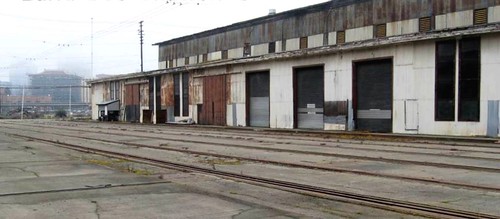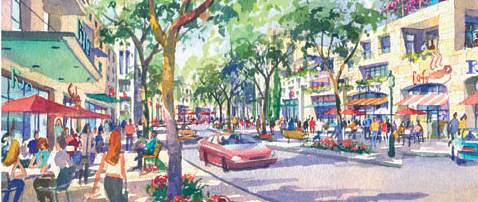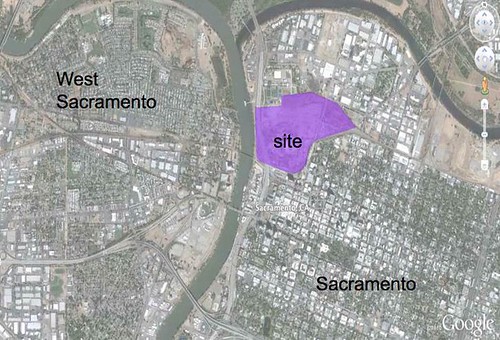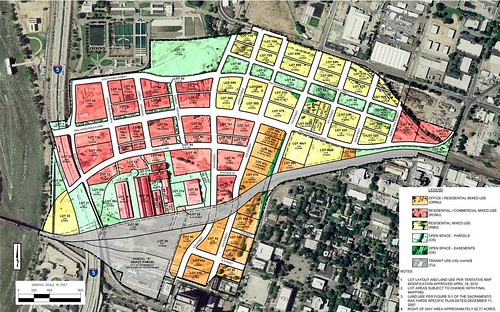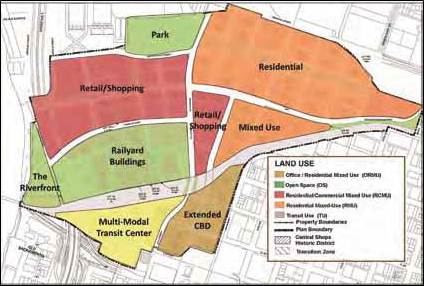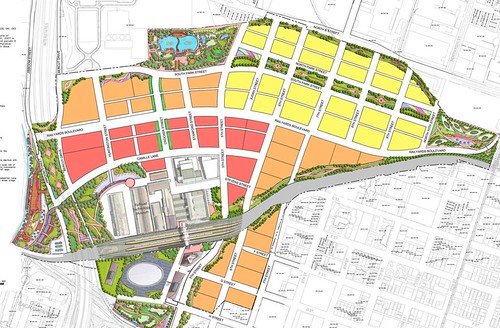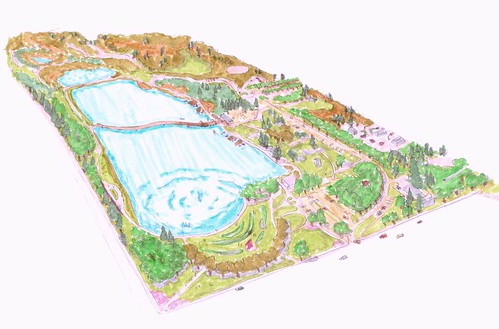Pursuing nonsprawling city growth with major brownfield redevelopment: the Sacramento Railyards

Posted October 19, 2012 at 1:29PM
For nearly a hundred years, the downtown Sacramento Railyard was a lively, prosperous place. At its height, the yard is said to have employed 10,000 workers, providing mechanical support for the entire western rail system. But by the 1970s the site had become a forgotten, neglected eyesore in the heart of California’s capital city.
That is going to change. Sacramento has initiated what must be one of the nation’s largest brownfield redevelopment projects, transforming 244 acres into a new train and bus station, thousands of new homes, stores, a public market, parks, and a rail technology museum. There was also a plan for a new arena to house the Sacramento Kings of the NBA, but according to press reports that part of the initiative is now in serious doubt.
The apparent loss of the arena may slow the concept somewhat but will not stop it; projects of this scale take years to finance and fully realize in any event. Infrastructure work has already begun. Tony Bizjak of the Sacramento Bee interviewed Jared Ficker of Inland American Real Estate Trust, the Illinois investment company that owns the bulk of the railyard:
“Ficker said company officials were excited about the possibility of an NBA arena next door, but that they still think their 200-plus-acre property remains highly marketable for housing, offices, restaurants, stores and other projects. He said the most important step toward developing the railyard already is well under way. The city and Inland have built two bridges to extend Fifth and Sixth streets over the tracks into the core of the railyard. Those road extensions will be completed next year, connecting the landlocked site to downtown.
“A major on-site road, Railyards Boulevard, will be built as well, connecting Bercut Drive on the west with Seventh Street on the east, and linking to extensions of Fifth and Sixth streets from downtown. That will allow the long-empty railyard to ‘go vertical’ as early as next year, Ficker said. He acknowledged last week for the first time that the company is looking for a master developer, and is taking calls from builders interested in buying railyard parcels.”
Bizjak’s story was published in April and updated late last month.
This is exactly the kind of nonsprawling development that can help fulfill the considerable promise of Sacramento’s sustainable communities strategy, which my colleagues in the Natural Resources Defense Council praised in a report last month. The plan was adopted pursuant to SB375, the state’s smart growth planning law.
The city of Sacramento agrees. From its website on the project:
"Identifying infrastructure funding mechanisms for the redevelopment of this major urban infill site provides the City an unprecedented opportunity to move away from the patterns of decentralization and suburban sprawl. Regionally, the project represents a significant opportunity to minimize growth pressures in the outlying areas slated for resource conservation, habitat protection, agricultural productions, and provide air quality and congestion relief."
The Urban Land Institute developed a detailed set of recommendations, many of which have been incorporated into the planning.
In addition, a particularly interesting set of concepts for the site's parks and green space (see site plan above) was developed last year by then-student Shengnan An as a senior project for the landscape architecture program of UC Davis. While generally consistent with the site plans developed by the city, Inland American and ULI, An's recommendations are more specific and, to my eyes, somewhat more sophisticated with respect to green infrastructure. They look worthy of serious consideration when the project moves into the appropriate phases.
Here are three of the images from An's plan:
Site plan for park on the project's north site
Conceptual rendering of park on the north side
Section rendering of stormwater management in greenways
The Center for Creative Land Recycling has produced a terrific short video on the railyards project. Enjoy:
Related posts:
- How cleanup and redevelopment of city brownfields reduces pollution (September 21, 2011)
- How California is planning growth for a prosperous economy and clean environment (September 25, 2012)
- Is placemaking a "new environmentalism"? (April 23, 2012)
- From brown to green to gold: San Mateo’s exemplary Station Park Green (October 24, 2008)
- Nashville's Gulch - the next Music City Miracle? (February 26, 2009)
Move your cursor over the images for credit information.
